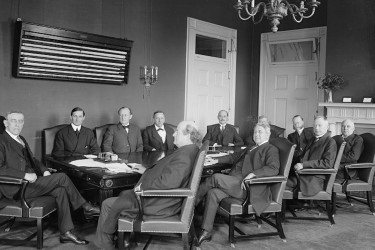Overview
"The people, all the people, must be known, they must be heard," proclaimed William T. Couch in 1939 from Chapel Hill. A respected editor turned part-time government bureaucrat, Couch served as director of the University of North Carolina Press and the Southeast regional director of the Federal Writers’ Project (FWP). As economic turmoil engulfed the nation, his concern for the region’s future mounted in tandem with elected leaders, government workers, and academics. Couch also joined cultural workers across the United States, such as writer James Agee and photographer Marion Post Wolcott. They shared a belief in the power of documentary expression to render visible silenced communities. However, with crucial interlocutors, including New Deal liberals in the FWP and sociologists, he troubled over how to "authentically" and "accurately" represent people and their conditions that were honest about the obstacles faced by the South while challenging depictions of Southern life as antiquated, depraved, and languid. "Somehow they must be given representation, somehow they must be given voice and allowed to speak, in their essential character," Couch argued.
The desire to circulate Southern voices grew out of distress over how academic sociology and literature intellectuals portrayed the region. While the former risked reducing people to generalizations and nameless statistics further obscured by dense academic prose, the latter often depicted the region as backward through stereotypical characterizations, a theme that federal bureaucrats drew on to argue that the region could not modernize and move out of the Great Depression. The stakes heightened as intellectuals moved between the academy and the New Deal state to identify and develop solutions. Couch proposed the Southern Life History Project (SLHP) as a special initiative in the FWP to address these issues. Government leaders such as Henry Alsberg, state FWP directors such as Edwin Bjorkman and William McDaniel, and federal writers such as Bernice Harris and Ida Moore worked with Couch to determine how the initiative could best document people’s life stories. Relying on the existing state and local FWP offices, the project employed over 150 federal writers and editors across the Southeast. This laudatory experiment in social documentary led to the collection of over 1,200 life histories in which Southerners shared their own stories of life during the Great Depression.
Layered Lives: Rhetoric and Representation in the Southern Life History Project recovers the history of the SLHP and its efforts to reconfigure the life history method. We employ an interdisciplinary approach that combines close readings of archival material with computational methods that analyze patterns across the collection. The digital platform gives readers an opportunity to explore archival materials and data alongside our argument, which opens up new forms of reading and interaction in the humanities. We address five questions:
- What were the motivating factors that led to the creation of the SLHP?
- How did the SLHP come into formation?
- How did the project come to define the form of a life history, and who was deemed capable of writing them?
- Which rhetorical strategies did SLHP writers employ to document interviewees’ lives, and how did these decisions shape who was and was not represented?
- What are the legacies of the SLHP?
In addressing these questions, we demonstrate key points in the struggle over what counted as social knowledge, how to represent social conditions accurately, and who could produce such knowledge. Our digital platform is organized into layers that correspond to a critical question motivating our analysis.








